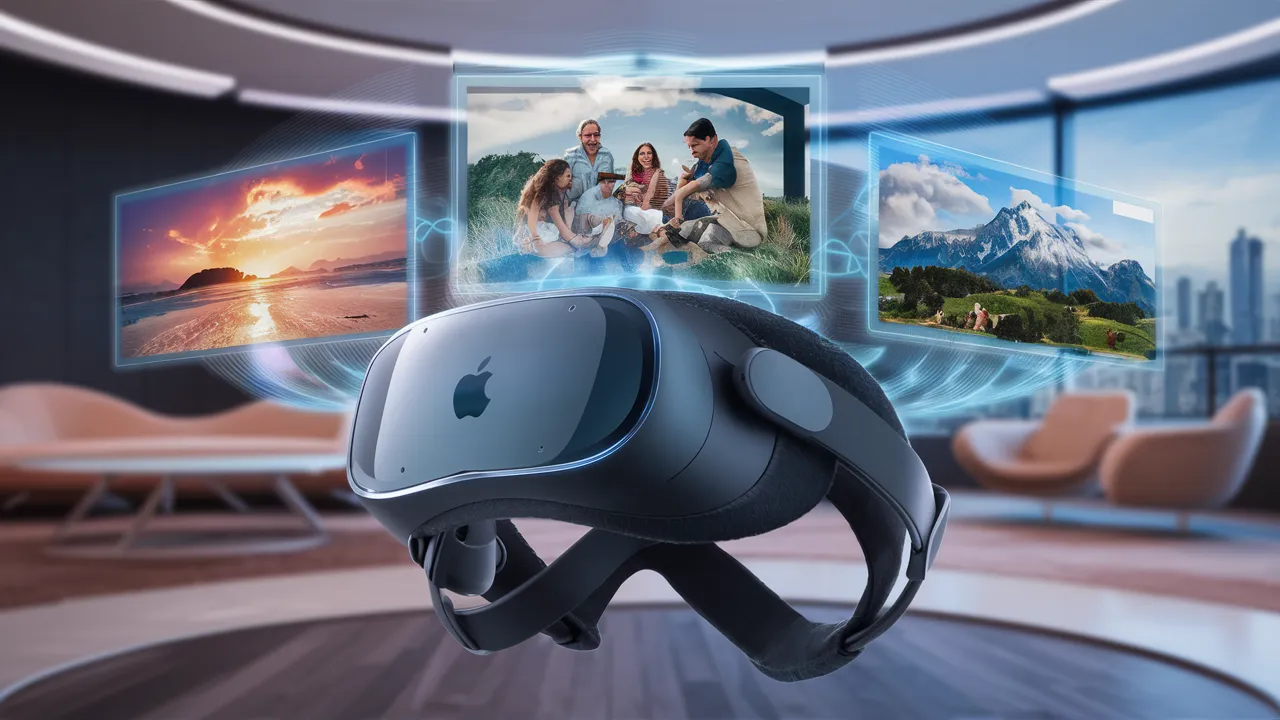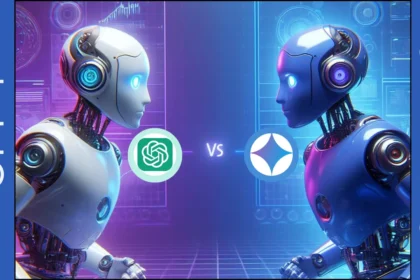Appl Vision Pro
The Apple Vision Pro is actually what, in other words, Revealed at the Worldwide Developers Conference of Apple on June 5, 2023, it has been long-rumored that the Vision Pro Apple video is the best vision of spatial computing technology. By this, I mean the way it is worn and the fact that it is configured to project the output directly into the user´s eye. It used to be the case that keyboards and mice were the main input devices on the human-machine interface, but Vision Pro Apple brings about a paradigm shift.
What about the Appl Vision Pro Video?
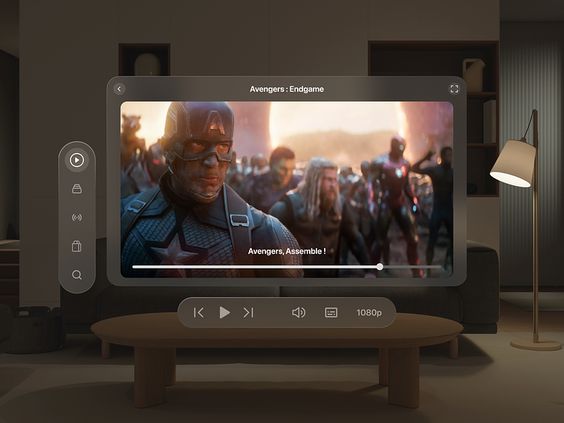
Perspectives surrounding the latest addition to Apple’s, the Apple Vision Pro video, surely cannot be an understatement. My confidence is deeply rooted in the fact that it will be out as promised. With the $3,500 “spatial computer” startup planned for early next year, there is no doubt that interest is at an extreme high. I have just been lucky enough to, well, let me say since WWDC announced Apple Vision Pro spatial video, at least I have used the device three times.
Through this filter, I delivered the media, including spatial videos captured with an iPhone 15 Pro, which were enabled to be experienced by the virtual reality headset under the Photos app. A 3D camera embedded in the Vision Pro Apple video amazingly captures 3D videos and photos that open doors to a world in which flashbacks from the past can be replayed just like that.
What do we want to put it to use for?
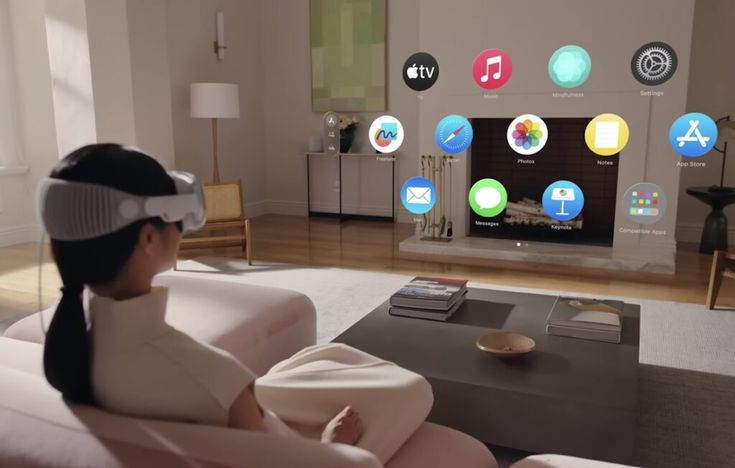
This game-changing digital technology makes watching TV shows and films and playing games a rather new experience. The display of Apple Vision Pro spatial video will be ultra-high with a much wider screen than the screens of other devices—this is the next step after HD.
The helmet incorporated a tech-updated version of spatial audio that gives an amazing 360-degree sound source. Simply put, it is the 3D sound equivalent in the digital world, where the environment you are immersed in comprises dozens of speaker radii and angles. It’s like a cinematic club!
Apple Vision Pro headset video has a three-dimensional camera, which will take us back to the most unforgettable memories by showing photos and videos we are proud of in 3D format.
Apple Visio Pro features
| Capacity/Storage Options: | 256GB, 512GB, and 1TB configurations. |
| Display Features: | Vivid 23M pixel micro-OLED display. 5.3D system with 7.5µm pixel pitch, 92% DCI-P3. Smooth 90-100Hz refresh, judder-free video, AirPlay. |
| Chips: | M2 chip: 8-core CPU, 10-core GPU, 16-core Neural Engine. R1 chip: 16GB unified memory, low latency, high bandwidth. |
| Camera: | Stereoscopic 3D camera for spatial capture. Aperture ƒ/2.00, 6.5MP stereo. |
| Sensors: | Sensor array: 2 main, 6 world-facing, 4 eye-tracking cameras. LiDAR, 4 IMUs, flicker, ambient sensors. Iris biometrics encrypted Optic ID for secure authentication. |
| Audio Technology: | Spatial Audio: Head tracking, personalized ray tracing. Six-mic array: Beamforming, low-latency connection to AirPods Pro. |
| Audio and Video Playback: | Audio: AAC, MP3, Apple Lossless, FLAC, Dolby Atmos. Video: HEVC, H.264, Dolby Vision, HDR10, HLG. |
| Battery Life: | General use: 2 hours. Video watching: 2.5 hours, supports charging while used. |
| Connectivity and Wireless: | 29.Wi‑Fi 6 (802.11ax), Bluetooth 5.3 for fast, reliable wireless connectivity. |
| Accessibility: | Accessibility features: VoiceOver, Zoom, Color Filters, Closed Captioning, Voice Control, Switch Control. Support for Made for iPhone bi‑directional hearing aids, and switch controllers. |
A SURGE OF EMOTION TRANSPIRED IN EVERY CELL OF MY EXISTENCE
This is the first time spatial videos have been filmed on an iPhone, other than the iPhone 15 Pro, since the release of iOS 17.2 dev beta 2 a month ago. Since then, I have been saving spatial videos taken with my iPhone. Of course, if you plan to own the latest iPhone 15 Pro or iPhone 15 Pro Max and wish to take advantage of the space’s capabilities, I recommend that you read that article because to take group photos, you need to enable that option within the camera section in the Settings app.
So, as I have already stated, no matter whether you are an experienced user or a newbie, recording spatial video with the iPhone 15 Pro is not difficult at all—just turn it on. The device is just another icon that appears in the usual video record setting and, once tapped, records immediately. 3D models that appear as simple 2D videos in your camera are saved in the role of your Vision, and this model has hologram-like effects when you view them on the Vision Pro Apple video device.
I started with things like recording my family, friends, and pets, and I am glad I had those moments documented using the spatial video techniques that Apple advised before I attended the sessions. These are the things you will not be able to preoccupy your memory of until 2 years ago, or, for example, the burger you had for lunch yesterday.
When will it be available?
Although Apple is making a big deal out of it now, its headset will be made available early next year. The MSRP starts at $3,499, can be found on apple.com and in Apple Stores in the USA, and will be available in more countries in the future.
How will Apple Vision Pro Video affect filmmaking during the process?
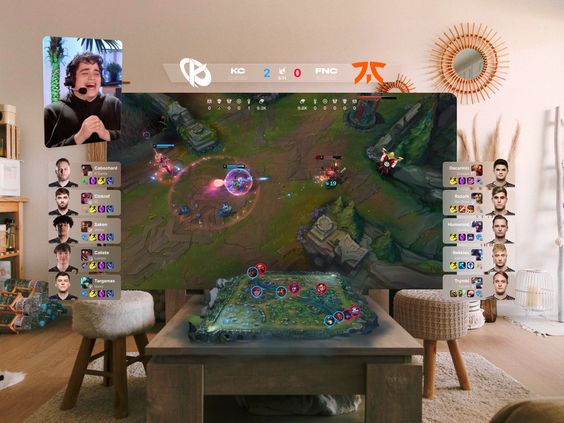
The presentation of Apple Vision Pro 3d video on the part of Apple brings a new age of “spatial editing,” as Final Cut Pro will be supported since the launch. The curator of an exclusive collection for artists, Matthew Haajopa, tweeted:
“I just discovered how to use the Apple Vision Pro spatial video, and it is going to make an incredible change to filmmaking, storytelling, and content creation.”
I didn’t know this sense before, but I think now I do. I had a feeling that I was there in the scene, you know.
Video editing process:
AR technology in Final Cut Pro will enable editing through an entirely new interface where interaction will be both visual and nonverbal. Some of the key advantages for editors include:
Some of the key advantages for editors include:
1. An unlimited canvas:
With Vision Pro 3D video, users can pack content on the screen without boundaries, eliminating the need for two or more screens for editing due to the eye appearance.
2. Newfound control:
Among other things, VisionOS offers convenient control of Vision Pro 3D video with eyes, hands, and voice.
3. Advanced accuracy:
Unlike the FirstPro eye-tracking system, the new Vision Pro has a couple of LEDs and cameras to do its tracking in the form of infrared beams in invisible light patterns.
4. Optimum screen quality:
Vision Pro video Apple uses the 23 million micro-OLED pixels in each eye to achieve one-for-one pixel mapping to create a 4K ultra-high resolution of the surrounding world.
5. Redefining creative spaces
Apple has again chosen Final Cut Pro over almost all other tools for the creation of video and music. This means that the Vision Pro headset video is compatible with just this single tool. It would benefit video and music makers. Besides those advantages mentioned, Apple has also developed the EyeSight feature, which demonstrates a realistic self-image using the forward display of the smart glass—the user being part of an immersive digital world.
The device is equipped with a 3D interface that enables the realization of such an unusual format: simultaneous displays on any screen, regardless of its size. Video editors can be as strong as they want with the clips and the transitions. Those music producers can use the ability to see the sound and the order of words.
Is the iPhone 14’s Vision Pro Apple’s first true AR or VR device?
It is a popular question because of the difference between AR (augmented reality) and VR (virtual reality), with which people very often associate the same phenomenon. AR is deployed in true-to-life environments, while VR is about a different reality. AR is the box universe of Vision Pro 3D video, but it supports VR as well.
Apple Vision Pro video, wearing mixed reality glasses, is taken to be an immersive gaming experience. In this regard, it is an embodiment of what is known as a “spatial computing” device, which is an augmented reality projector.
Practically, what makes the Apple Vision Pro video different from other VR gadgets?
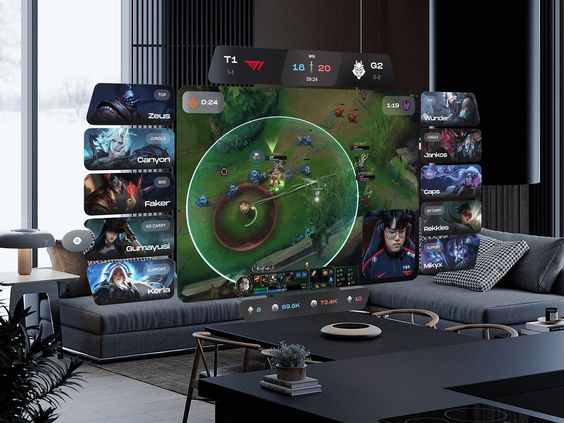
Beyond Apple Vision Pro Gaming, there are a lot of additional VR systems on the market. However, the only headset that currently is a rival to it at the same price point is the Microsoft HoloLens 2. Also, among the products by the company is Magic Leap 2, not far after.
Here’s how the competitors stack up from a price, weight, size, and/or feature perspective:
- Microsoft HoloLens 2: Not the latest, but a strong contender for a product, priced around $3500.
- Magic Leap 2: A direct rival of Apple in this market, indeed the lightest model at just 260 grams, and m moreover, at $3299.
- Meta Quest Pro VR headset offers controllers where you can move freely, which is among the most comfortable ones on the market at $999 only.
- VIVE XR Elite: It is no surprise that VIVE can beat Apple, as it is high-performance with an all-in-one XR headset that turns straight into portable glasses, and it will cost $1099.
- Meta Quest 3: Equally surprising, Meta introduced its device within a week before Apple’s headset, keeping its price unbelievably low—just $499.
- Valve Index: A wired VR headset that requires being hooked up to a PC setup, costing you $1424.
- The Sony PlayStation VR 2, equipped with eye tracking and motion controllers and the future Haptic Vest for an even heightened immersion, is offered for only $599.
Other 3D cameras
Likewise, it should be noted that there are numerous 3D cameras available for sale, mainly because many companies are striving for ownership in this profitable market. The following are some of the highest-rated models:
1. Fujifilm: Yes, the Finepix camera is ready to use right out of the package.
2: Lenovo Mirage: The best option for those who set the budget as a priority.
3: Scult Pac it XX: Very simple to use with high performance for live broadcasting.
4K KanDao QooCam 4K is liked because of its high-quality images suitable for social media posts.
We review the SID 3D model, a cheap 3D camera. Whatever the case is, regarding virtual reality headsets and 3D cameras, there are so many brands and models that it is easy to get confused nowadays. The best you can do is to go ahead and ensure you have done the required research before choosing the model that strikes a balance between your primary needs and the available money in your budget.
If you’re dead set on experiencing the visions of Apple Vision Pro spatial video and you detest the price, maybe you can be a bit patient (just in case). Apple aims to come up with a cheaper model as soon as it sees it reasonable to do so, which is planned for the end of 2025.
FAQ’s
1. How do I record 3D video on my iPhone?
Capturing spatial videos on iPhone is as easy as capturing regular videos on iPhone: Spinning the iPhone to the landscape orientation, just make sure the spatial video icon is shown, and then record by clicking
2. What format is Apple vision pro 3d Video?
Apple created a revolutionary 2:1 video format called Apple Immersive Videos that records the human eye’s view of things at 180⁰ with spatial sound. Apple Vision Pro is an ultra-crystal clear visual experience that allows you to watch your favorite Apple TV+ and other Streaming services content.
3. How do you take 3D videos on iPhone 15 Pro?
Here, we are going to use the Open Camera app which is pre-installed on your iPhone 15 Pro or iPhone 15 Pro Max. With your iPhone in Hand, Choose Video mode and convert it to the Landscape screen of your iPhone. , then press and hold the home screen of your device, or press any of the two volume buttons to activate recording.
4. Is spatial video 3D?
The polygon-based visuals seem 3D when rendered into Apple Vision Pro and flat on most other devices. For example, people with Apple Vision Pro can watch the spatial videos gathered on a dual camera (iPhone 15 Pro or Pro Max) of an iPhone given that the viewer has Apple Vision Pro to tap into.

